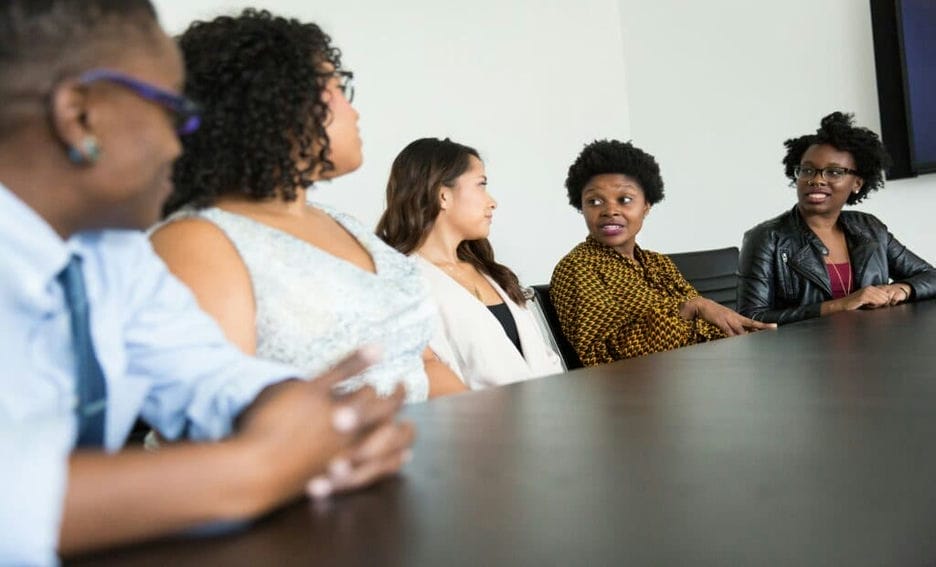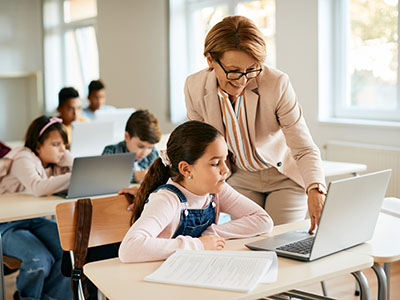After hearing fellow teachers describe the benefits of project based learning that they were seeing with their students, a veteran elementary teacher was willing to give PBL a try. She knew that her students would be more engaged in learning if they were solving real problems, not doing worksheets. She wanted them to have opportunities to share their solutions with public audiences. But despite her motivation, this teacher hesitated. “I worried about doing it wrong,” she admitted. In her traditional classroom, she knew exactly how to address content standards and manage student behavior. What would she need to change in her own practice if she shifted to PBL?
As PBL gains popularity in school systems across the United States and internationally, many teachers are asking similar questions. Instead of being the all-knowing expert who transmits knowledge, a PBL teacher needs to be a well-informed coach, facilitator of learning, and guide through the inquiry process. Instead of holding all the answers, a PBL teacher encourages active questioning, curiosity, and peer learning. Although PBL teachers have a mastery of content, they are comfortable acknowledging what they don’t know—and then learning alongside their students.
How does this shift happen? For most teachers, change happens gradually as they identify and adopt strategies that help their students succeed. Although some schools emphasize PBL across all content areas, it’s more common for teachers to alternate between PBL and more traditional instruction.
To demystify the teacher’s role in PBL, the Buck Institute for Education has identified seven project-based teaching practices that set the stage for successful learning. A companion rubric can be used by teachers to assess their competency with the practices.
For more great education thought leadership, sign up for the TrustED newsletter.
Let’s take a closer look at each of these seven practices. Stories and strategies from diverse classrooms bring these practices to life:
- Build the culture: The right classroom culture builds students’ independence, fosters collaboration, encourages a growth mindset, supports risk taking, encourages high-quality work, and builds inclusiveness and equity. In many ways, culture is the fuel for student voice and choice, sustained inquiry, and persistence. Positive culture doesn’t get built with a one-day team builder. It’s an ongoing effort to create an inclusive community of learners.
- Design and plan: Intentional design of the learning experience sets the stage for students and teachers to capitalize on the full potential of PBL. Essential project design elements provide a blueprint for the project, including planning for both formative and summative assessment. Ideas for projects can come from a variety of places, including real-world issues and problems, the local community, and students’ interests. Teacher decisions at the design stage include curating resources and, potentially, connecting with experts or community partners.
- Align to standards: By aligning projects to meaningful learning goals, teachers ensure that PBL is academically rigorous and has an emphasis on priority standards and higher-order thinking. What’s more, students understand why they’re learning what they’re learning and how PBL relates to the world beyond the classroom.
- Manage activities: A well-managed PBL experience enables students to get to deep learning and develop the teamwork and self-management skills that will serve them in life. Project management strategies focus on productivity and efficiency, but PBL is not about following a recipe. A well-managed project allows for sometimes “messy” learning.
- Assess student learning: Assessment ensures that students work toward mastery. It’s not about “gotchas” or sorting, but about growth. PBL requires a balance of formative and summative assessment, including both team and individual feedback. Feedback comes from multiple sources, including peers, experts, and audiences along with the teacher. Students have time to improve and refine their work based on comprehensive feedback.
- Scaffold student learning: Scaffolding creates conditions so every student can succeed with the project and master learning goals. In an equitable classroom, students’ prior learning experiences, language fluency, or reading levels are not barriers to success.
- Engage and coach: Engaging and coaching strategies bring out the best in students. Coaching strategies use questioning, modeling, and reflection to build intrinsic motivation and help students achieve their learning goals. A caring, trusting relationship between teacher and students is the foundation for successful PBL.
Of course, these practices are not unique to project-based teachers. That’s welcome news for newcomers to PBL, who will realize that they don’t have to abandon familiar teaching strategies if they shift to PBL. The challenge is building on what they already do well to create more student-centered learning. That’s exactly what happened for the teacher described above, who worked with an instructional coach to plan her first project. The success of that effort motivated her to tackle the next project on her own.
Becoming a skilled project-based teacher seldom happens with one project. It’s an ongoing process of professional learning, reflection, and feedback. It takes practice.
How is your school or district engaging students and teachers to develop a project based learning environment? Tell us in the comments.
Suzie Boss and John Larmer are the authors of Project Based Teaching: How to Create Rigorous and Engaging Learning Experiences.
 Suzie Boss is a writer and educational consultant who focuses on the power of teaching and learning to improve lives and transform communities. She is a member of the Buck Institute for Education’s (BIE) National Faculty.
Suzie Boss is a writer and educational consultant who focuses on the power of teaching and learning to improve lives and transform communities. She is a member of the Buck Institute for Education’s (BIE) National Faculty.
 John Larmer is editor in chief at BIE, where he authors and edits project based curriculum units and codevelops professional development workshops and materials for teachers. The Buck Institute for Education creates, gathers, and shares high-quality project based learning resources and provides professional development to schools, teachers and districts.
John Larmer is editor in chief at BIE, where he authors and edits project based curriculum units and codevelops professional development workshops and materials for teachers. The Buck Institute for Education creates, gathers, and shares high-quality project based learning resources and provides professional development to schools, teachers and districts.
Subscribe to our Newsletter
Expert tips and customer service insights delivered right to your inbox.

